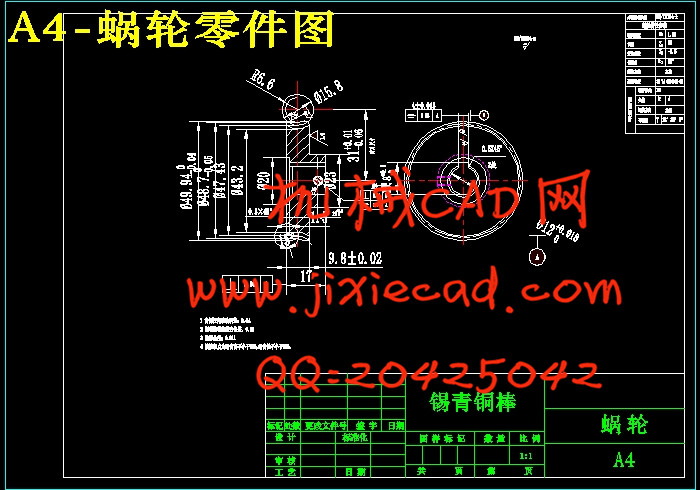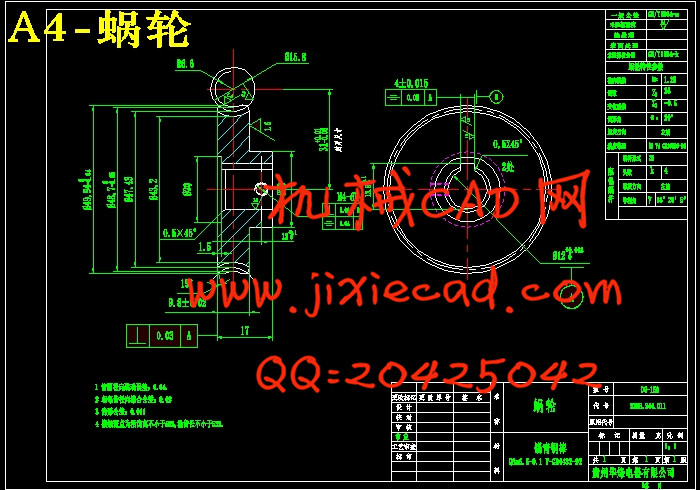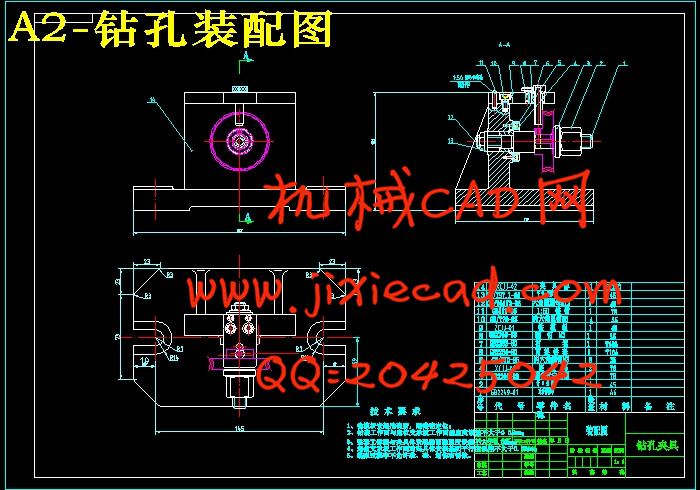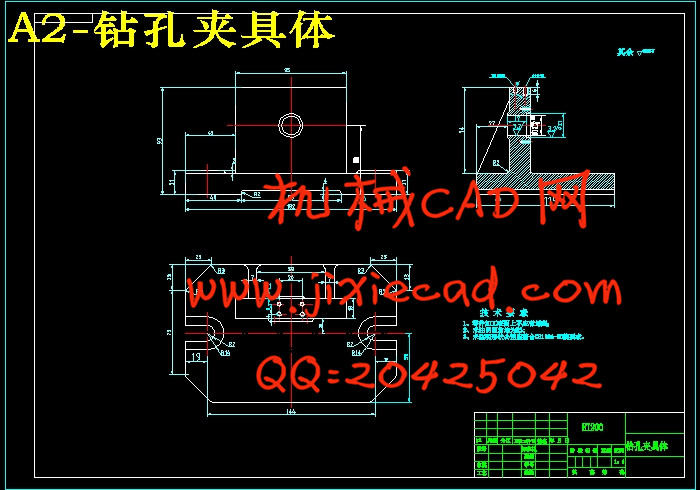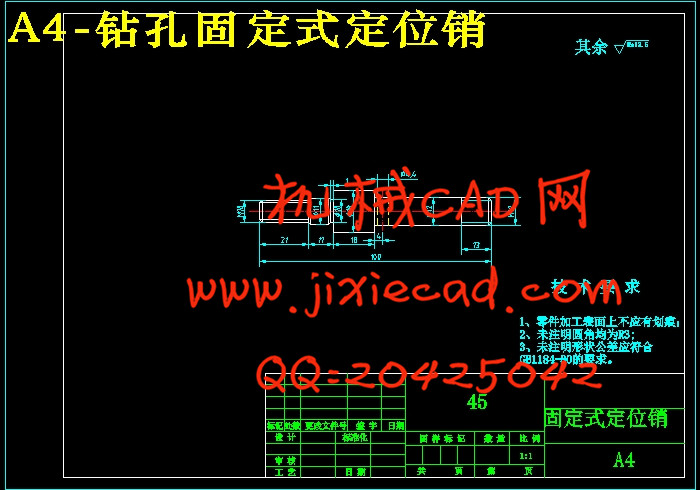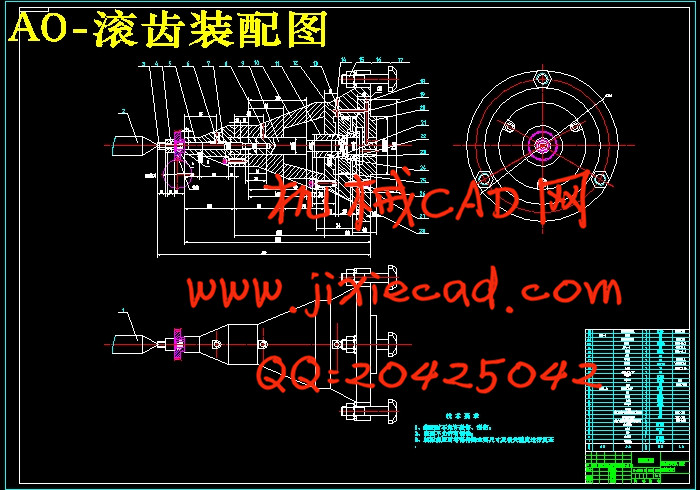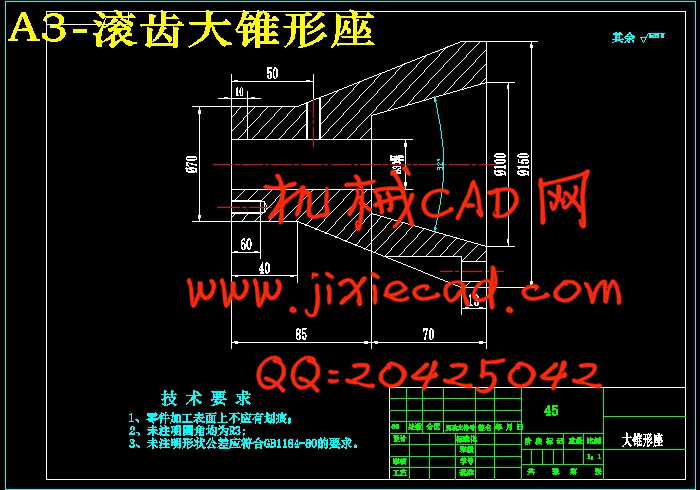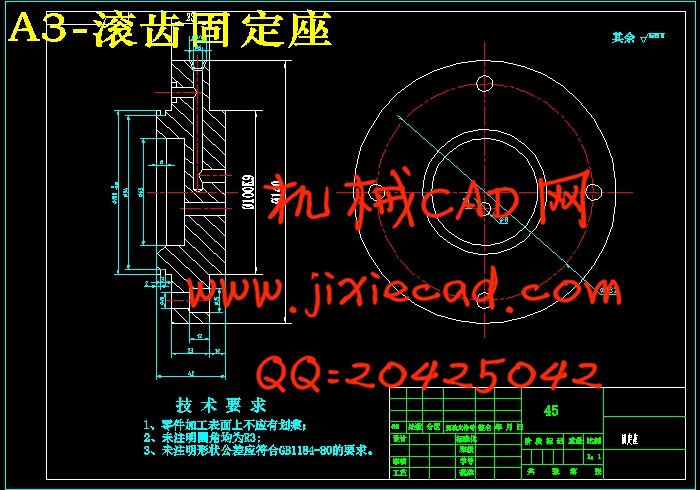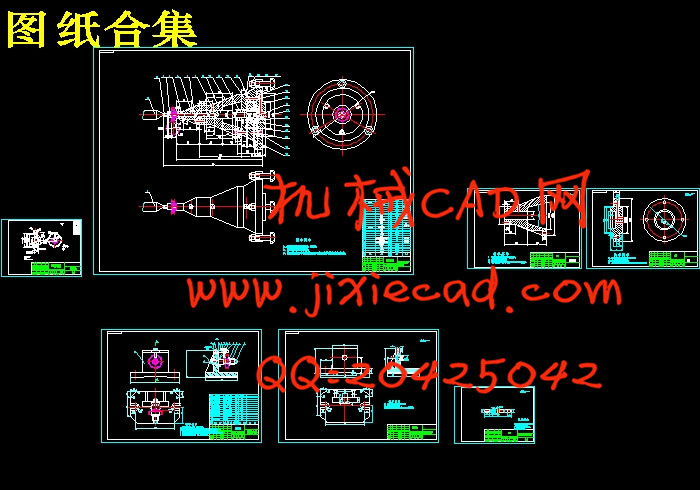设计简介
摘 要
本设计是基于蜗轮零件的加工工艺规程及一些工序的专用夹具设计。蜗轮零件的主要加工表面是外圆及孔系。一般来说,保证平面的加工精度要比保证孔系的加工精度容易。因此,本设计遵循先面后槽的原则。并将孔与平面的加工明确划分成粗加工和精加工阶段以保证孔系加工精度。主要加工工序安排是先以支承孔系定位加工出顶平面,在后续工序中除个别工序外均用顶平面和工艺孔定位加工其他孔系与平面。夹具选用专用夹具,夹紧方式多选用手动夹紧,夹紧可靠,机构可以不必自锁。因此生产效率较高。适用于大批量、流水线上加工。能够满足设计要求。关键词:蜗轮类零件;工艺;夹具;
ABSTRACT
The design is based on the body parts of the processing order of the processes and some special fixture design. Body parts of the main plane of the surface and pore system. In general, the plane guarantee processing precision than that of holes machining precision easy. Therefore, this design follows the surface after the first hole principle. Plane with holes and the processing clearly divided into roughing and finishing stages of holes to ensure machining accuracy. Datum selection box input shaft and the output shaft of the supporting hole as a rough benchmark, with top with two holes as a precision technology reference. Main processes arrangements to support holes for positioning and processing the top plane, and then the top plane and the supporting hole location hole processing technology. In addition to the follow-up processes individual processes are made of the top plane and technological hole location hole and plane processing. Supported hole processing using the method of coordinate boring. The whole process of processing machine combinations were selected. Selection of special fixture fixture, clamping means more choice of pneumatic clamping, clamping reliable, institutions can not be locked, so the production efficiency is high, suitable for large batch, line processing, can meet the design requirements.
Key words: Angle gear seat parts; fixture;
目 录
摘 要·········································································································· IIKey words: Angle gear seat parts; fixture;
目 录
ABSTRACT···································································································· I
1 绪论········································································································· 1
1.1 本课题的研究内容和意义··································································· 1
1.2 国内外的发展概况············································································· 2
1.3 本课题应达到的要求·········································································· 3
2 加工工艺规程设计························································································ 4
2.1 零件的分析························································································ 4
2.1.1 零件的作用······················································································ 4
2.1.2 零件的工艺分析··············································································· 4
2.2 蜗轮加工的主要问题和工艺过程设计所应采取的相应措施························ 5
2.3 蜗轮加工定位基准的选择····································································· 5
2.3.1 粗基准的选择··················································································· 5
2.3.2 精基准的选择··················································································· 5
2.4 蜗轮加工主要工序安排········································································ 5
2.5 机械加工余量、工序尺寸及毛坯尺寸的确定··········································· 7
2.6选择加工设备及刀、量具······································································ 8
2.7确定切削用量及基本工时(机动时间)··················································· 8
2.8 时间定额计算及生产安排··································································· 15
3 滚齿夹具设计····························································································· 17
3.1 工序尺寸精度分析············································································· 17
3.2 定位方案确定··················································································· 17
3.3 切削力及夹紧力的计算······································································· 17
3.4 定位误差分析计算············································································· 20
3.5 夹具设计及操作的简要说明································································ 20
4 钻孔夹具设计····························································································· 21
4.1 研究原始质料··················································································· 21
4.2 定位、夹紧方案的选择······································································· 21
4.3切削力及夹紧力的计算······································································· 21
4.4 误差分析与计算················································································ 22
4.5 钻套、衬套、钻模板设计与选用·························································· 23
4.6 夹具设计及操作的简要说明································································ 25
结 论··········································································································· 26
参考文献······································································································ 27
致 谢········································································································· 29


